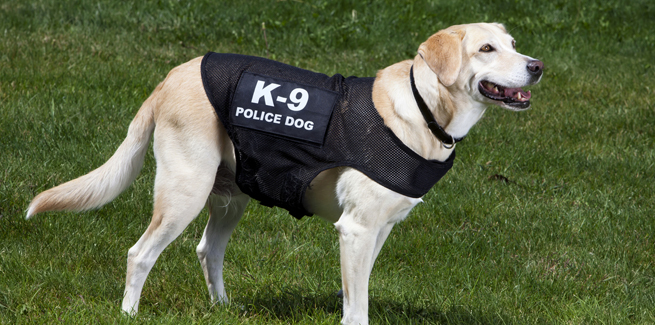Vibrating dog vest makes it possible to train dogs without saying a word

Imagine telling a dog to sit, lie down, or roll over without words or hand signals.
Researchers at Ben-Gurion University of the Negev (BGUN) in Beer Shava, Israel, have developed a modified dog vest that makes it possible to train dogs to obey commands by sending them painless haptic vibrations.
Haptic/tactile feedback (or “haptics,” derived from the Greek phrase “I touch”) is the use of advanced vibration patterns and waveforms to convey information to a user or operator.
The researchers say haptic technology may be useful for delivering remote commands to working dogs, for use in search and rescue, and other service animal applications.
“Our research results showed that dogs responded to these vibrotactile cues as well [as] or even better than vocal commands,” said Amir Shapiro, PhD, MSc, director of the Robotics Laboratory at BGUN’s Department of Mechanical Engineering. “Our current proof-of-concept study shows promising results that open the way toward the use of haptics for human-canine communication.”
Communication with working dogs is still mostly visual and aural, but voice commands and hand signals aren’t always possible, depending on what the dogs are doing. For example, search-and-rescue or tracker dogs often work at a distance from their handlers, under rubble, in small spaces, or out of sight and earshot.
The haptic vest would allow their handlers to issue commands even under those circumstances.
Another possible use is to issue commands to police and military dogs working in loud areas, such as parades, or war zones filled with gunfire.
The modified, commercially available dog vest contains four small, vibrating motors that would be positioned on the dog’s back and sides. Those motors can be used to train or direct dogs to respond to different painless vibrations sent via wireless remote control by a handler. Handlers can communicate different commands by controlling which motor vibrates and for how long using a small handheld device, as seen in this demonstration video, where Tai, a six-year-old Labrador retriever/German shepherd mix, responds to several distinct commands, such as “spin,” “down,” and “to me.”
Additionally, haptic commands can be issued by anyone, regardless of language. For example, Tai understands verbal commands in Hebrew, not English, but speakers of any language can issue a haptic command using the vest and remote control.
The researchers will present their findings in a paper entitled “Vibrotactile Vest for Remote Human-Dog Communication” at the World Haptics Conference on July 12 in Tokyo, Japan.
Photo credit: © iStock/JodiJacobson



